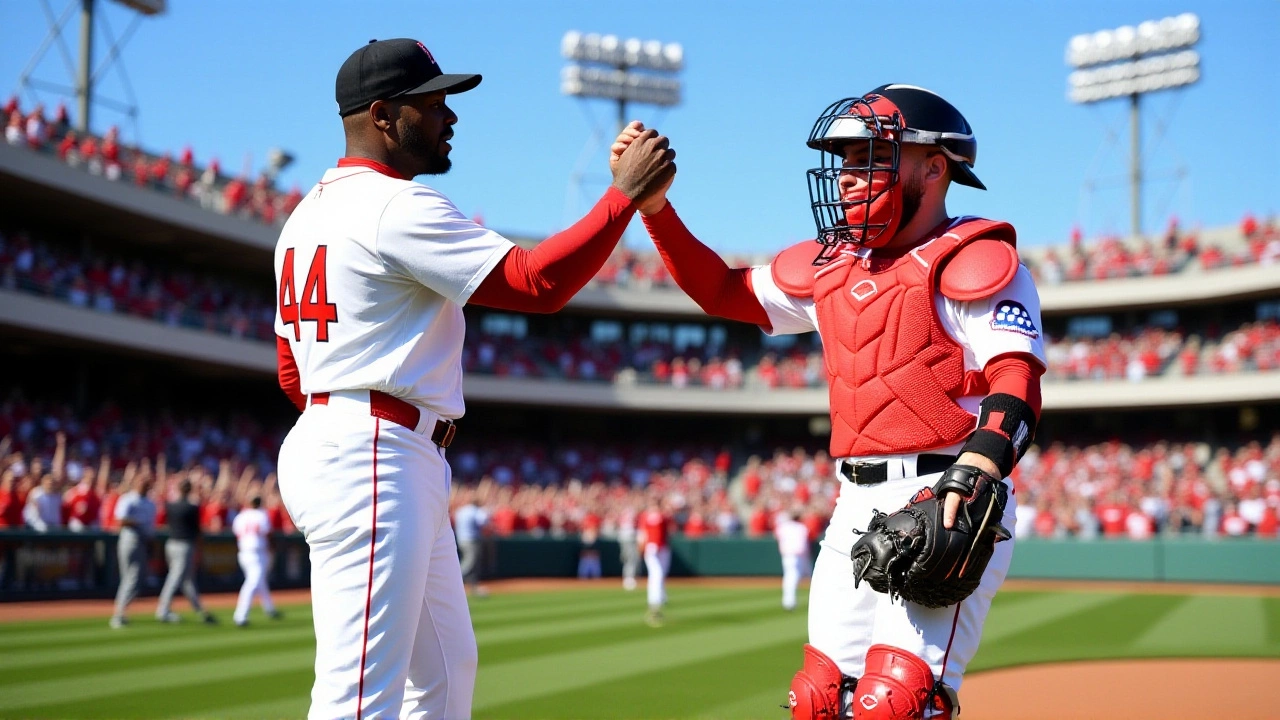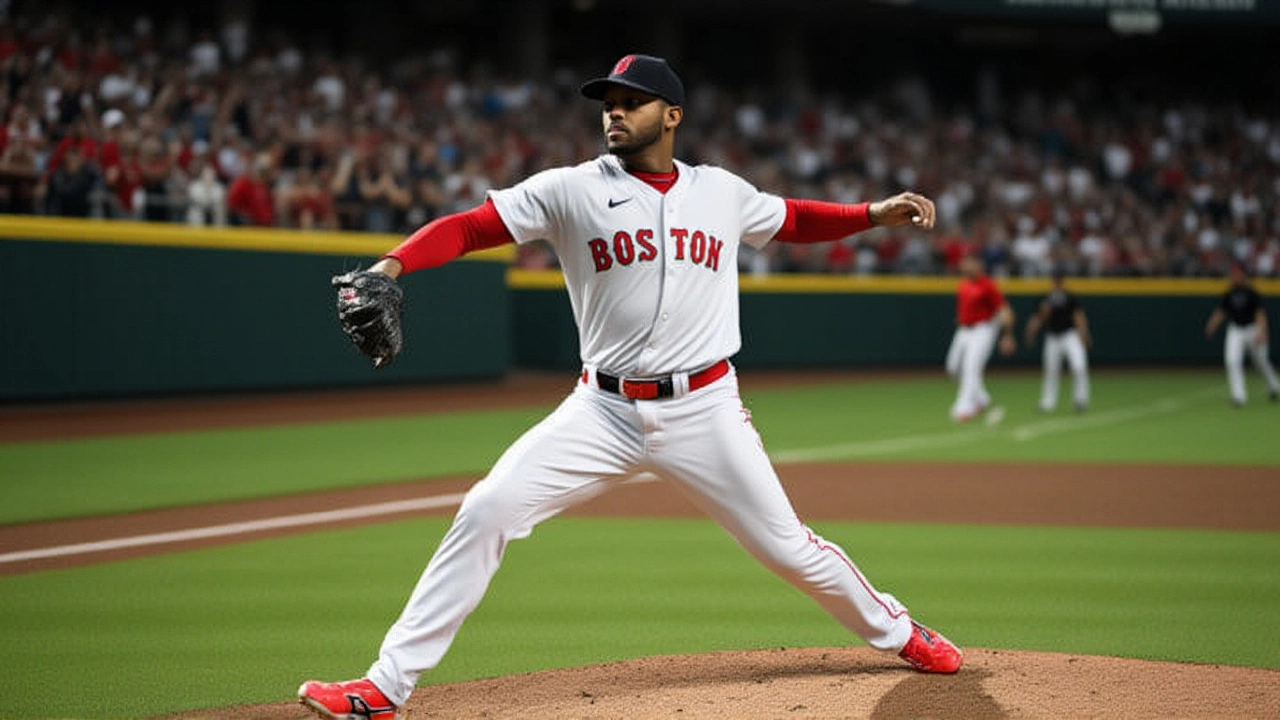When Aroldis Chapman, the 37‑year‑old left‑hander for the Boston Red Sox, entered the ninth inning of the wild‑card opener at Yankee Stadium on October 1, 2025, he faced a bases‑loaded, no‑out jam and walked away with a 3‑1 win.
Season‑Long Dominance Sets the Stage
Chapman's 2025 campaign has been nothing short of historic. Through 61⅓ innings he has posted a 1.17 ERA, racked up 32 saves (tied for fifth in MLB), and struck out 85 batters while issuing just 15 walks. The numbers read like a résumé for a Hall of Fame reliever, yet they belong to a man who turned 37 just a few months ago.
His velocity remains elite: radar guns have ticked 100, 101, and even 102 mph on his four‑seam fastball this season. In August, he earned the American League Reliever of the Month award after a nine‑inning burst against the Arizona Diamondbacks that lowered his ERA to 0.98.
Perhaps the most eye‑catching stat is his franchise‑record 16 consecutive hitless appearances, a stretch that began on May 28, 2025, and saw Chapman retire 46 straight batters without surrendering a hit. In total, he has faced 228 batters, thrown 917 pitches, induced 49 ground balls and 79 fly balls, and allowed only three home runs.
Game‑Day Drama: The Wild‑Card Opener
The Red Sox opened the series with starter Garrett Crochet, who fanned 11 Yankees in 7⅔ innings before handing the ball to Chapman in the eighth. After a clean third‑out fly to third‑baseman Jose Caballero, Chapman returned to the mound with a two‑run lead.
The situation unraveled fast. First‑baseman Paul Goldschmidt singled, followed by right‑fielder Aaron Judge and left‑fielder Cody Bellinger loaded the bases with nobody out.
What happened next is why analysts are dubbing his season "historic." Chapman struck out designated hitter Giancarlo Stanton with a 92 mph splitter, coaxed second‑baseman Jazz Chisholm Jr. into a shallow right‑field fly, and capped the escape by fanning center‑fielder Trent Grisham with a 101 mph four‑seamer.
Voices from the Dugout and Beyond
Red Sox manager Alex Cora could barely hide his grin in the locker room. "Aro's stuff still blows you away. To see him shut the door like that at 37? That's priceless for this club," he said.
Even Yankees pitcher Gerrit Cole admitted, "I don’t think we ever expected to see a reliever with that kind of velocity and command at his age. He gave us a master class in the ninth."

Why Chapman’s Performance Matters
Boston finished the regular season 89‑73, five games back of the division‑winning Toronto Blue Jays and the Yankees, yet clinched the wild‑card thanks in part to Chapman’s reliability. The Red Sox have used him in 60 games, making him one of the most heavily leaned‑on relievers in modern baseball.
Historically, late‑career resurgences for relievers are rare. The last comparable stretch belongs to Craig Kimbrel, who posted a sub‑2.00 ERA at age 34 in 2022. Chapman not only matches that but adds blistering velocity that most younger arms can’t sustain.
From an analytical standpoint, his 16 straight hitless outings translate to an estimated Win Probability Added (WPA) of 0.43 in those games—a figure that could swing a playoff series.
Looking Ahead: What’s Next for Boston?
The Red Sox head back to Yankee Stadium for Game 2 on Wednesday. If Chapman can repeat even a fraction of his October 1 heroics, Boston will have a real shot at pulling an upset against a Yankees team riding an eight‑game winning streak.
Beyond the series, his dominance could reshape how teams value veteran relievers. Contracts for 100‑plus mph arms might see a premium rise, and younger pitchers could model their training after Chapman’s blend of velocity and refined secondary pitches.
Frequently Asked Questions
How does Chapman’s performance affect the Red Sox’s chances in the series?
With a 1.17 ERA and the ability to shut down high‑leverage situations, Chapman gives Boston a distinct edge. In a short series, one blown ninth inning can decide the outcome, so his reliability dramatically improves the Sox’s win probability.
Is a 100+ mph fastball common for a 37‑year‑old reliever?
It’s exceedingly rare. Most pitchers see a velocity drop in their early thirties. Chapman’s radar‑gun readings of 100‑102 mph place him in a tiny elite group, making his 2025 season a statistical outlier.
What does a "hitless appearance" entail, and why is 16 consecutive notable?
A hitless appearance means the pitcher retires every batter without allowing a base‑hit. Sixteen straight such outings (46 batters) set a new franchise record for Boston and rank among the longest streaks in modern MLB history.
Could Chapman’s success influence how teams use veteran relievers?
Yes. Teams may now consider keeping high‑velocity arms longer, investing in advanced recovery methods, and structuring contracts that reward sustained elite performance even past the typical age peak.
What are the Red Sox’s next challenges after Game 2?
If Boston wins Game 2, they’ll need to manage bullpen fatigue and possibly face the Yankees again in a decisive Game 3. Maintaining Chapman’s health and effectiveness will be paramount, as will capitalizing on offensive opportunities against a Yankees rotation that’s been dominant all season.

